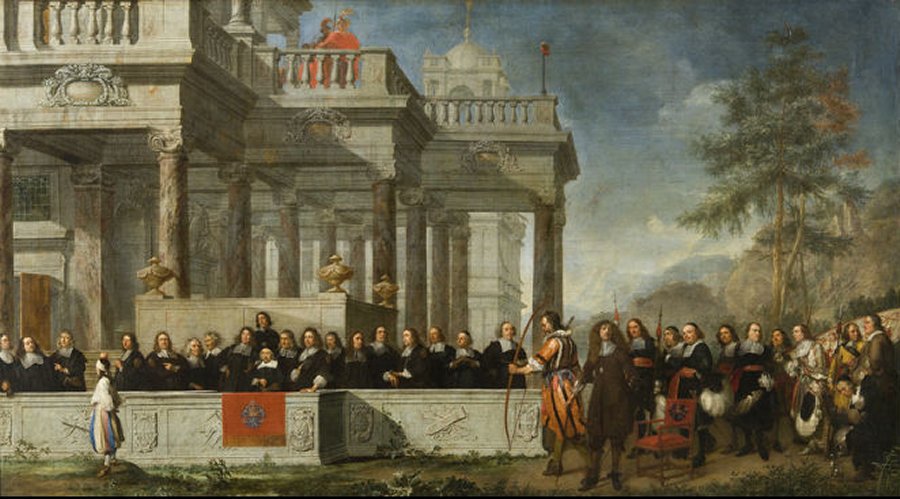Wilhelm Tell: Famous Legendary Crossbowman And Swiss Patriot – Symbol Of Freedom And Dignity
A. Sutherland - AncientPages.com - Wilhelm Tell was a Swiss national hero symbolizing the political and individual freedom struggle.
The scene depicting the hero shooting an apple off his son's head is probably known to everyone.
Monument of the Swiss Hero and Patriot with his son.
The father pulls the string, checks the wind, aims, and releases the bolt.
The arrow flew whistled only millimeters over his son's head and pierced a red autumn apple.
Tell breathes a sigh of relief but also knows he will never forgive the Austrians.
The event took place on November 18, 1307, according to a widespread urban legend mentioned in books dating back to the late fifteenth century. Tell, a famous mountaineer and crossbowman, was a resident of Bürglen in the canton of Uri, whose capital was in Altdorf, Switzerland.
The brave Swiss patriot Tell lived during the 13th and early 14th centuries when his country was not unified yet but was a conglomeration of small states under Habsburg feudal rule.
The Austrian governor and colonial overlord Hermann Gessler was an unpopular figure. He sought to humiliate the residents of Altdorf, so he ordered the erection of a tall pole in the town square, at the top of which would be displayed his hat - a symbol of the power of the Habsburg.
The Legend of Wilhelm Tell shown to the Antwerp Guild of St Sebastian. 1672; Credits: Philips A. Immenraet, W. Schubert van Ehrenberg, Charles E. Biset via Wikimedia Commons
Every Swiss man who entered the square would be obliged to pay allegiance to a cruel tyrant Gessler and the foreign imperial power he represented by bowing before his cap.
The famous crossbowman disobeyed Austrian authority; he refused to pay homage to a Habsburg liege and was forced to submit to the marksmanship test.
He had to shoot an apple from his son's head; the test was dangerous and humiliating, but Tell won it.
When the governor asked why Tell had a second bolt in the quiver, the Swiss replied, "… the second arrow was for you if the first had wounded my boy…"
The tyrannic Austrian official had Tell arrested for this insult and ordered to transport him across Lake Lucerne.
Tell with Son. Credits: E. Stückelberg (1831 - 1903) Kunstsammlung Basel
A sudden storm allowed Wilhelm Tell to escape, or perhaps he was secretly released during the transport to the fortress. Later, the patriot Tell killed Gessler, the tyrant of Altdorf, and this event began the uprising against the Habsburg power in the cantons. It was also the Swiss first to take a crucial step in its struggle toward the independent Swiss Confederation.
Several accounts of the Tell legend exist, and many of them have been compared with the stories of Palnatoke, a legendary Danish hero, and other legends of migration from Sweden to Switzerland during the Middle Ages.
However, tracing any historical source concerning the Swiss Wilhelm Tell is difficult.
In 1470, a chronicle named the "White Book of Sarnen" reports the legend for the first time, and the classic story appeared in the standard history book 'Chronicon Helveticum' (1734–36) by Aegidius Tschudi.
Wilhelm Tell remains an immortalized national hero of the Swiss people.
Written by A. Sutherland AncientPages.com Staff Writer
Updated on December 4, 2023
Copyright © AncientPages.com All rights reserved. This material may not be published, broadcast, rewritten or redistributed in whole or part without the express written permission of AncientPages.com
Expand for referencesReferences:
More From Ancient Pages
-
 7,000-Year-Old Unique Artifacts Discovered Under Melting Ice In Canada
Archaeology | Nov 30, 2023
7,000-Year-Old Unique Artifacts Discovered Under Melting Ice In Canada
Archaeology | Nov 30, 2023 -
 Climate Change Likely Drove Early Human Species To Extinction – Scientists Say
Archaeology | Jul 31, 2023
Climate Change Likely Drove Early Human Species To Extinction – Scientists Say
Archaeology | Jul 31, 2023 -
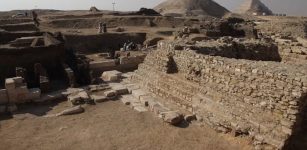 Pyramid Of Unknown Ancient Egyptian Queen And Hundreds Of Mummies Discovered In Saqqara
Archaeology | Nov 17, 2022
Pyramid Of Unknown Ancient Egyptian Queen And Hundreds Of Mummies Discovered In Saqqara
Archaeology | Nov 17, 2022 -
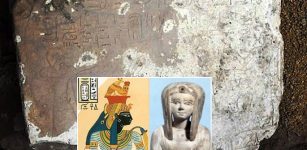 Limestone Stela Of Liberation Discovered In Kom Ombo Temple In Aswan, Egypt
Archaeology | Oct 17, 2018
Limestone Stela Of Liberation Discovered In Kom Ombo Temple In Aswan, Egypt
Archaeology | Oct 17, 2018 -
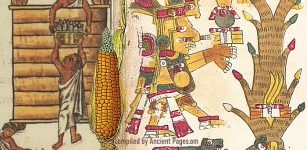 Centeotl: Lord Of Maize Who Was Revered Before The Olmecs By All Mesoamerica’s Inhabitants
Featured Stories | Feb 20, 2024
Centeotl: Lord Of Maize Who Was Revered Before The Olmecs By All Mesoamerica’s Inhabitants
Featured Stories | Feb 20, 2024 -
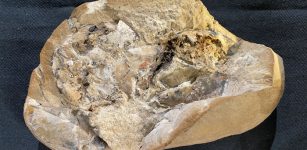 380-Million-Year-Old Heart – The Oldest Ever Found Sheds New Light On Evolution Of Human Bodies
Archaeology | Sep 16, 2022
380-Million-Year-Old Heart – The Oldest Ever Found Sheds New Light On Evolution Of Human Bodies
Archaeology | Sep 16, 2022 -
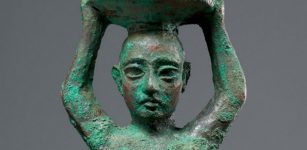 Divine Shulgi Of Ur: Influential, Long-Ruling King, Conqueror And Native Akkadian Speaker In Five Languages
Civilizations | Mar 22, 2019
Divine Shulgi Of Ur: Influential, Long-Ruling King, Conqueror And Native Akkadian Speaker In Five Languages
Civilizations | Mar 22, 2019 -
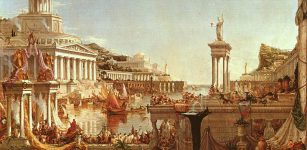 Did Lead Poisoning Cause The Fall Of The Roman Empire?
Archaeology | Oct 24, 2017
Did Lead Poisoning Cause The Fall Of The Roman Empire?
Archaeology | Oct 24, 2017 -
 Mysterious Disappearance Of Explorer Peng Jiamu In Lop Nur – The Wandering Lake
Featured Stories | Dec 20, 2018
Mysterious Disappearance Of Explorer Peng Jiamu In Lop Nur – The Wandering Lake
Featured Stories | Dec 20, 2018 -
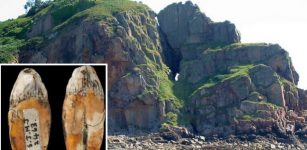 Evidence Of A Hybrid Population Of Neanderthals And Modern Humans Discovered At La Cotte De St Brelade
Archaeology | Feb 9, 2021
Evidence Of A Hybrid Population Of Neanderthals And Modern Humans Discovered At La Cotte De St Brelade
Archaeology | Feb 9, 2021 -
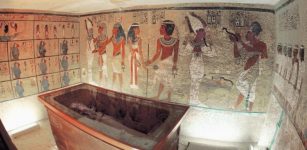 Non-Invasive Radar Will Search King Tutankhamun’s Tomb For Nefertiti’s Hidden Crypt
Civilizations | Sep 24, 2015
Non-Invasive Radar Will Search King Tutankhamun’s Tomb For Nefertiti’s Hidden Crypt
Civilizations | Sep 24, 2015 -
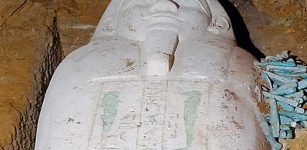 Limestone Sarcophagus, Ushabti Figures Unearthed In Minya’s Al-Gharafa Area, Egypt
Archaeology | Oct 3, 2020
Limestone Sarcophagus, Ushabti Figures Unearthed In Minya’s Al-Gharafa Area, Egypt
Archaeology | Oct 3, 2020 -
 Unexplained Phenomena Witnessed Around Mysterious Ancient Stone Structures In New York – Can A Sacred Native American Mountain Offer Clues?
Featured Stories | Nov 3, 2024
Unexplained Phenomena Witnessed Around Mysterious Ancient Stone Structures In New York – Can A Sacred Native American Mountain Offer Clues?
Featured Stories | Nov 3, 2024 -
 ‘Impossible’ Ancient Traces Of Humans – No, We Are Not The First
Ancient Mysteries | May 16, 2020
‘Impossible’ Ancient Traces Of Humans – No, We Are Not The First
Ancient Mysteries | May 16, 2020 -
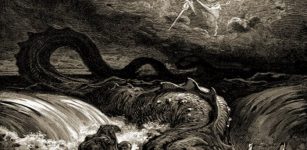 Yam: Tyrannical Hydra-Like Sea Monster God Cast Out Of Heaven
Featured Stories | Aug 3, 2016
Yam: Tyrannical Hydra-Like Sea Monster God Cast Out Of Heaven
Featured Stories | Aug 3, 2016 -
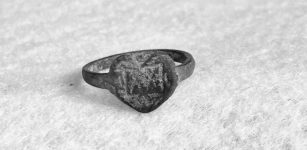 Unique Heart-Shaped Jesuit Ring At Fort St. Joseph In Michigan
Archaeology | Sep 17, 2022
Unique Heart-Shaped Jesuit Ring At Fort St. Joseph In Michigan
Archaeology | Sep 17, 2022 -
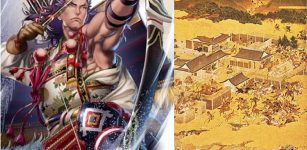 Legendary Minamoto No Tametomo – First Samurai To Commit Seppuku
Ancient History Facts | Aug 7, 2023
Legendary Minamoto No Tametomo – First Samurai To Commit Seppuku
Ancient History Facts | Aug 7, 2023 -
 Knowledge Of Divine Alien Beings And High-Tech In Ancient Egypt Described In Sacred Books And Papyrus – The God Who Spoke About Time Dilation – Part 1
Ancient Mysteries | May 12, 2021
Knowledge Of Divine Alien Beings And High-Tech In Ancient Egypt Described In Sacred Books And Papyrus – The God Who Spoke About Time Dilation – Part 1
Ancient Mysteries | May 12, 2021 -
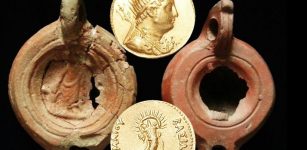 Greco-Roman Bath Complex, Coin Depicting King Ptolemy III And Other Artifacts Found In Egypt’s Gharbia Province
Archaeology | May 26, 2018
Greco-Roman Bath Complex, Coin Depicting King Ptolemy III And Other Artifacts Found In Egypt’s Gharbia Province
Archaeology | May 26, 2018 -
 Lost World Of Doggerland: Parts Of Britain’s Sunken Stone Age Atlantis Discovered
Archaeology | Jul 4, 2012
Lost World Of Doggerland: Parts Of Britain’s Sunken Stone Age Atlantis Discovered
Archaeology | Jul 4, 2012


